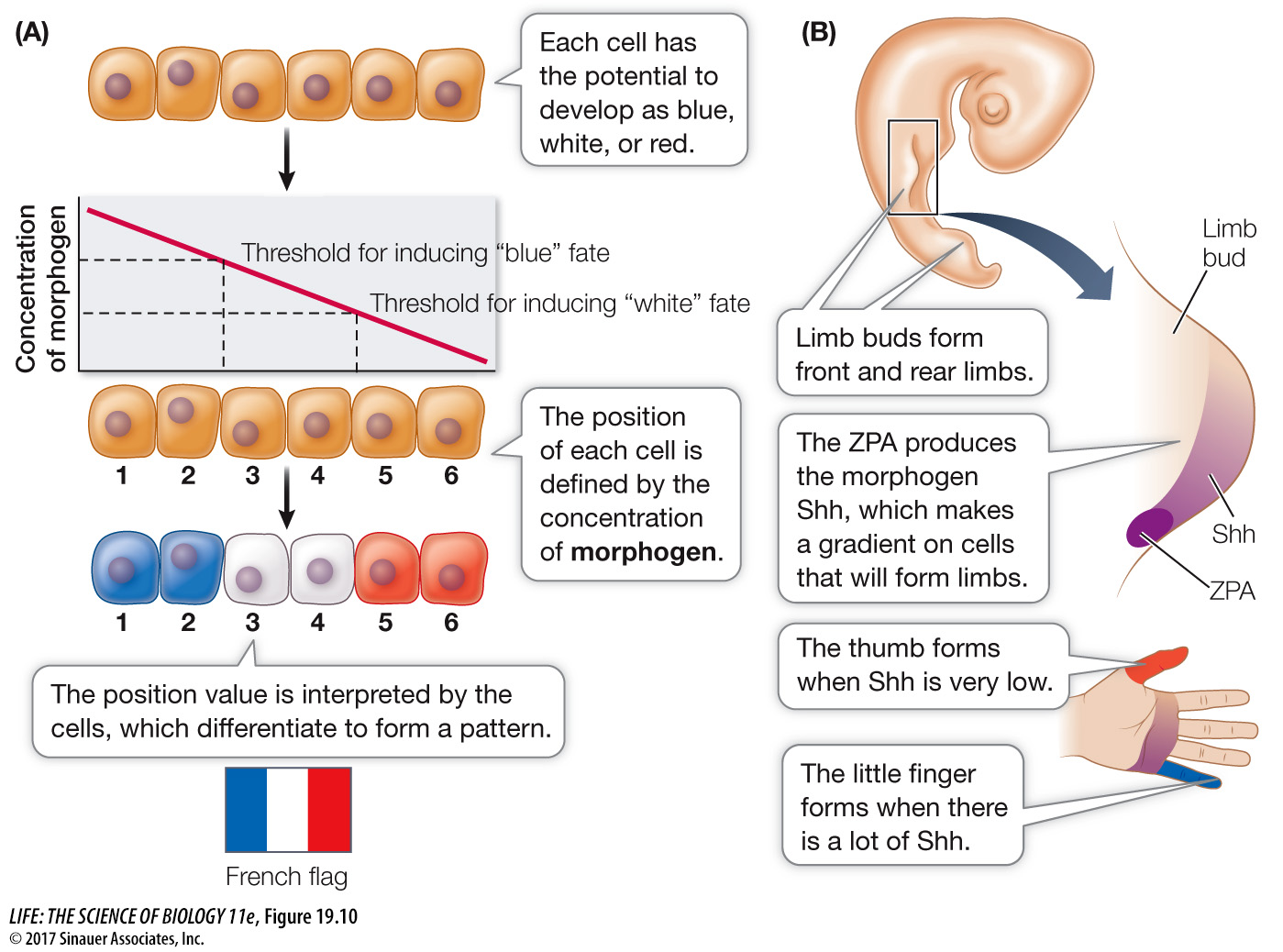Morphogen gradients provide positional information
During development, the key cellular question “What will I be?” is often answered in part by “Where am I?” Think of the cells in the developing nematode, which can develop into different parts of the vulva depending on their positions relative to the anchor cell (see Figure 19.7). This spatial “sense” is called positional information. Positional information often comes in the form of an inducer called a morphogen, which diffuses from one cell or group of cells to surrounding cells, setting up a concentration gradient (as you saw for LIN-3 in C. elegans vulval induction). There are two requirements for a signal to be considered a morphogen:
It must directly affect target cells, rather than triggering a secondary signal that affects target cells.
Different concentrations of the signal must cause different effects.
Developmental biologist Lewis Wolpert uses the “French flag model” to explain morphogens (Figure 19.10A). This model can be applied to the differentiation of the vulva in C. elegans and to the development of a vertebrate limb.

Figure 19.10 The French Flag Model (A) In the “French flag” model, a concentration gradient of a diffusible morphogen signals each cell to specify its position. (B) The zone of polarizing activity (ZPA) in the limb bud of the embryo secretes the morphogen Sonic hedgehog (Shh). Cells in the bud form different digits depending on the concentration of Shh.
The vertebrate limb develops from a paddle-shaped limb bud (Figure 19.10B). The cells that develop into different digits must receive positional information; if they do not, the limb will be totally disorganized—imagine a hand with only thumbs or only little fingers. A group of cells at the posterior base of the limb bud, just where it joins the body wall, is called the zone of polarizing activity (ZPA). The cells of the ZPA secrete a protein morphogen called Sonic hedgehog (Shh). Shh forms a gradient that determines the posterior–anterior (little finger to thumb) axis of the developing limb. In humans and other primates, the cells exposed to the highest dose of Shh form the little finger; those that receive the lowest dose develop into the thumb.
